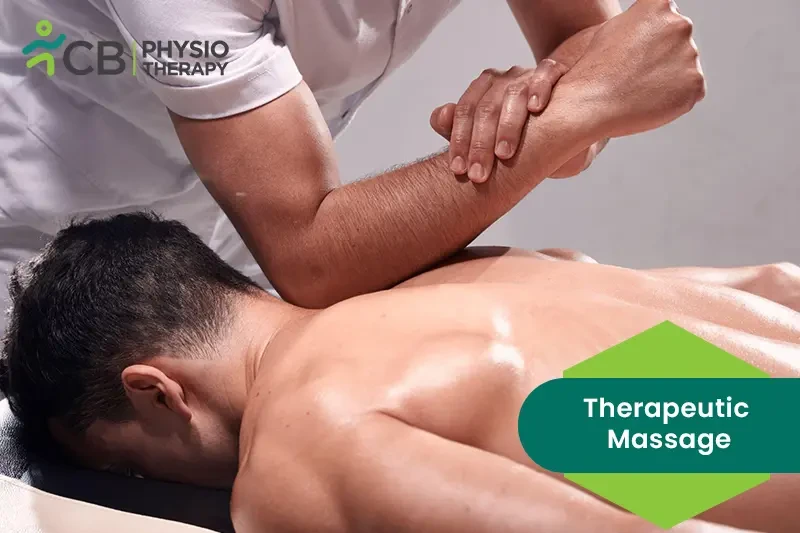
Therapeutic massage is a treatment that involves the application of pressure on the body for corrective or rehabilitative purposes applied by the hands, fingers, elbow, knees, forearm, feet, or mechanical aids.
The cells of the body depend on the blood supply and lymph, as these fluids carry nutrients and oxygen to the parts of the body and also carry away the waste and toxins. Massage enhances the smooth flow of blood and lymph, thus promoting overall health. Several types of massage can be done on different parts of the body for therapeutic purposes. Through massage, pressure is applied by stroking i.e. using the hands gently or by strong pressure to the muscles and joints of the body for healing purposes.
The following are the principles of Therapeutic massage:
Depth of pressure:
Depth of pressure is the amount of force applied to the tissue by stroking. The depth of the pressure should be increased gradually and with great care, and also watch for signs of discomfort.
Speed of the stroke:
Speed of the stroke is how fast or slow stroking is performed. Depending on the desired response any stroke may be applied slowly and quickly.
Rhythm:
Rhythm is the regularity or constancy with which the stroke is applied. Rhythm can be slow or fast, depending on the condition being treated.
Duration:
Duration is the length of time each stroke lasts during its application or the length of time the stroke remains on any given body part.
Direction:
Direction is the path of the stroke, it is always towards the heart.
Frequency:
Frequency is the number of times each stroke is performed.
Effleurage:
Effleurage is a smooth, gliding stroke, it can be light, moderate, or deep. Lubricant is used for effleurage, progressing from light to moderate and then deeper tissues.
Physiological effects:
It increases muscle tone, accelerates blood and lymph flow thus improving tissue drainage which in turn reduces swelling.
Petrissage:
Petrissage is squeezing, rolling, or kneading that follows effleurage. It can be applied by two hands or one, done towards the heart on the extremities. The depth of the pressure is deeper than the other strokes.
Physiological effects:
It promotes the flow of tissue fluid and encourages increased blood flow by vasodilatation. It reduces swelling, and inflammation.
Friction:
Friction massage is a parallel, cross-fiber, and deep circular movement that causes layers of tissues to rub against each other, the rhythm is constant, the speed is low and the duration is minimum as the stroke is intense. The frequency depends upon the patient's condition. It helps to increase the flow of blood and break down scar tissue.
Physiological effects:
It is given at the site of injury to mobilize the underlying tissues and muscles to separate the adhesions in the scar tissue, this causes the fibers to normally realign for freer movement.
Tapotement:
Tapotement is a stroke with a blow to the muscle which is immediately pulled off as soon as the hand strikes the tissue i.e. it is a short, alternating tap done with hands, fingers or the edge of the hand.
Physiological effects:
Tapotement causes relaxation, desensitization and can break up lung congestion.
Vibration:
Vibration is a quick rhythmic shaking movement. It can be done slowly or vigorously depending on the length of the time.
Physiological effects:
Vibration stimulates nerve fibers and neuromuscular reeducation and also decreases hypertonicity.
Deep tissue massage:
Deep tissue massage is a slow, deliberate stroke that puts pressure on layers of tissues deep under the skin. Deep tissue massage may be used for therapeutic purposes to relieve chronic tension and help with muscle injuries, such as a back sprain, muscle problems, such as soreness, injury, or imbalance. It helps relieve tight muscles and muscles with chronic pain.
Physiological effects:
Deep finger pressure is used to relieve tension from the deepest layers of the muscles and connective tissues relieving tight muscles, chronic muscle pain, and anxiety.
Trigger point massage:
A trigger point is an area of the body that causes discomfort and restricted movement due to tightness. Trigger point massage uses a combination of gentle and deeper strokes, in areas with muscle tightness, these are the target areas during this treatment. It helps to relieve the pain and tension in the areas.
Physiological effects:
It is designed to relieve pain by releasing endorphins and eliminating toxins in the muscle and has immediate effects on the reduction of pain.
Sports massage:
Sports massage is for athletes of all levels. It is developed to help athletes in training before, during, or after sports events. Sports massages can be given to some athletes as a warm-up before a high-intensity workout or game. It promotes flexibility and prevents injuries. And also enhances healing after a sports injury.
Physiological effects:
These massages can enhance blood flow, prevent injuries and improve recovery times.
Lymphatic Drainage Massage:
Lymphatic drainage massage is a gentle massage of tissues designed to help increase the circulation of lymph fluids in the body. The massage is usually done with light pressure with long strokes along the skin to increase the movement of lymph through the body system.
Physiological effects:
Lymphatic drainage massage drains out the lymph fluid which is rich in protein. The lymph fluid moves in the whole body in lymph vessels. It takes out toxic things like bacteria, viruses, and waste, and carries them to the lymph nodes.
Select your City to find & connect with our experts regarding Physiotherapy for Therapeutic Massage